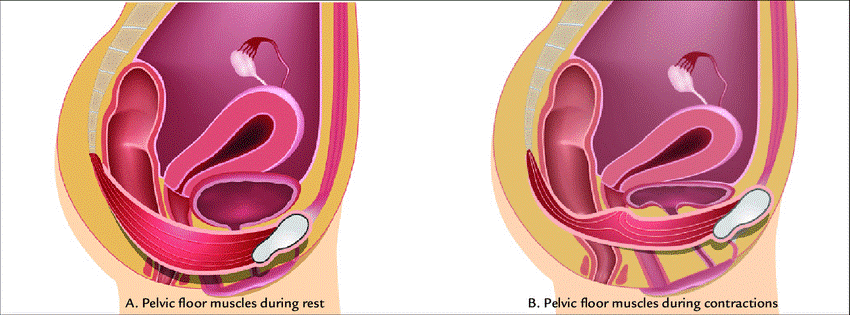
Another benefit of the breath work as discussed in the previous post is the effect it has on your pelvic floor.
Picture a balloon. This is your tummy area. The top of the balloon is your diaphragm (the muscle at the bottom of the lungs) and the bottom of the balloon is your pelvic floor muscles. When you inhale the diaphragm contracts, flattens and moves downward. Imagine a pressing down on the balloon. With that change in pressure the base of the balloon, your pelvic floor muscles, will lengthen or stretch. As you exhale the reverse happens and your pelvic floor can naturally lift up and contract 8. It’s almost like a reflexive lift similar to if you jump on a trampoline you would spring upward. The pelvic floor should react like that to the downward pressure. So to strengthen your pelvic floor you would do your squeezes as you breathe out.
Don’t think that because you are preparing for birth that you should no longer strengthen your pelvic floor. Training your pelvic floor during pregnancy does not have any effect on the risk or incidence of perineal trauma, episiotomy or instrumentation/caesarean deliveries. In fact a large body of evidence shows that pelvic floor muscle training done antenatally reduced rates of incontinence in the later stages of pregnancy and up to 6 months after.
You can activate your pelvic floor muscles in any position you may find side lying a good place to start building up to antigravity positions and during functional tasks like lifting or running.
First picture your pelvis like this picture and imagine the pelvic floor is like a sling or hammock sort of doming downwards then visualise what would happen the hammock if the ropes at each end were pulled up – the hammock or your pelvic floor will rise and lift.
Breathe in and let the belly swell then as you exhale tense the muscles around your back passage (anus) like you don’t want to pass wind. This gives the most effective contraction.
You should feel a noticeable tension inside and underneath the pelvis. Try to hold for as long as you can with the goal of holding for 10 seconds and doing that 10 times. You then repeat the exercise 3 times a day. Ensure that in between each repetition you allow a moment to release and relax the muscles back down. Taking a full breath cycle will help that.
You should also work on tensing the pelvic floor muscles quickly and strongly as you can and let go as you inhale. Also repeat this 10 times 3 times a day. This “knack” is useful for if you find you leak when coughing or sneezing.
